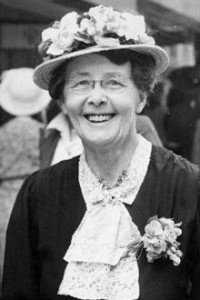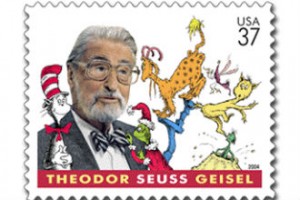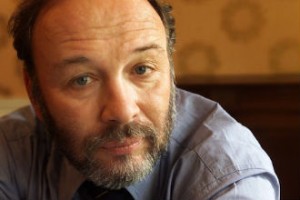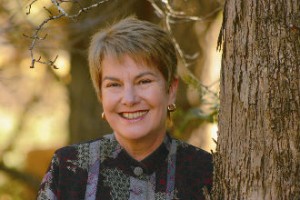When most writers of fiction are published, they are so inordinately proud of getting their beloved work into bookstores that they think nothing of splashing their name across the book’s cover. Why would you do anything else? After all, you want the world to know you wrote this book, right?
Well, not always. For reasons that are as varied as the authors themselves, many writers down through the ages have felt it prudent to use a pseudonym, or nom de plume, on their books. While the idea of assumed names has garnered a certain romantic cachet over time, the motivations for using a name other than your own are often brutally practical. Their use might have been necessitated by prevailing social mores, or family pressures, or simply to allow an already famous author to spread their creative wings.
Whatever the motivation, many writers have decided that the anonymity afforded by a pseudonym was just what the literary doctor ordered and so inspired by an article on flavorwire.com, 10 Odd Stories Behind Famous Authors’ Nom de Plumes, we decided to do some digging of our own and discover the person behind some well known nom de plumes.
MILES FRANKLIN
She is unarguably one of Australia’s most beloved and well known authors, having penned classics like My Brilliant Career (1901) and All That Swagger (1936). So why would Stella Marie Sarah Miles Franklin want to hide behind a pseudonym of any kind?
Simply because back when Miles Franklin began submitting her work to her potential publishers near the turn of the twentieth century, the work of female authors was widely regarded to be overly romantic and poorly written. So when her initial approach to Angus and Robertson was rejected, largely because of the verbosity of the text, she asked Henry Lawson if he would champion her cause and signed her letter to him as Miles Franklin, hoping he would not suspect that she was in fact a woman. He did, but kept up the pretense and championed her cause regardless.
Thus, with her foot in the publishing door and her gender successfully concealed, Miles Franklin, who went on to use a number of other pseudonyms in her life including the almost fanciful Brent of Bin Bin (1930s) and Mr and Mrs Ogniblat L’Artsau, went on to literary greatness and an exalted place in the canon on Australian literature.

SYDNEY BAUER
She is the celebrated author of the David Cavanaugh series of crime thrillers set in Boston, Massachusetts, USA, with the latest instalment The 3rd Victim released in September 2011.
But even though almost a century separates her and the great Miles Franklin, her decision to use a name on the dust jacket other than the one her parents gave her, Kimberly Scott, was motivated in part by the same reasons that led Miles Franklin to adopt her pen name – the misguided idea that women can’t write certain types of books as well as men. Specifically, research that had revealed that many readers looked more favourably on legal thrillers if they are written by men.
In a podcast interview that Valerie Khoo conducted with her in June 2009, Kimberly further explained why she decided to go with a pseudonym instead of using her real name:
“It is yes, my name is Kimberly. The reason for it back in Undertow days, with my first novel was statistics show here in this country that a lot of men don’t pick up that genre being legal thriller written by a female. We wanted to come up with a name that I could be either male or female and I settled on Sydney because I stole that from the show called Alias which the lead character played by Jennifer Garner’s name was Sydney Bristow. The Bauer of course comes from Jack Bauer and 24.”

DR.SEUSS
Born Theodor Seuss Geisel in 1904 in Springfield, Massachusetts, the man destined to make green eggs and ham, and cats in hats an essential part of childhoods the world over, adopted a pseudonym for an entirely different reason.
While he would go on to write children’s books of such inspired cleverness that the president of his publisher Random House, Bennet Cerf, was led to call him a genius, he started out writing for the Jack-o-Lantern magazine at Dartmouth College as a member of the class of 1925. This nascent career writing for the college magazine threatened to come to a skidding halt when a wild party led to his suspension from extracurricular activities. Undaunted by this setback, Ted Geisel as he was known to his friends, simply used his middle name as a nom de plume and his contributions to the magazine continued uninterrupted.
He later added the “Dr.” as a witty nod to his father’s aspirations for him to become a doctor, and thus a legend in children’s publishing was born. His love affair with pseudonyms didn’t end there though with books being written under the pen names Theo LeSieg and quirkily, Rosetta Stone also seeing the light of day.

ANONYMOUS
He is the man responsible for one of the great publishing mysteries of modern times – just who wrote the novel, Primary Colours, a barely disguised warts-and-all portrayal of Clinton’s first presidential campaign which was released in January 1996? Wishing to remain anonymous, Joe Klein withheld his identity from even his editor Daniel Menaker at Random House, citing the time-honoured tradition of writers using names other than their own.
But his decision created a firestorm of controversy when, after emphatic public denials that he was the author, he came out in July of 1996 and admitted he was in fact the man behind “Anonymous” all along. While he retained his job at Newsweek, where he was a highly regarded columnist, he lost his job as a commentator at CBS News and earned opprobrium from colleagues and observers who felt he had behaved unethically.
Whatever your view of his decision to hide his identity behind a pseudonym, he was right in saying that there is a long tradition of writers using pseudonyms so they can comment on matters where they would otherwise be denied from doing so. But as his case demonstrates all too vividly, it can backfire on you too.

EMILY RODDA
This well-known Australian author, whose real name is Jennifer Rowe, assumed a pseudonym when she was first looking to get published so she could be assured of getting an honest appraisal of her work by colleagues. She was working at the time at Angus and Robertson and submitted her first manuscript under her grandmother’s name, which was accepted and sold so well that she kept the pen name for all her subsequent children’s books, like her successful Rondo trilogy.
In a way Jennifer Rowe has practised a form of reverse pseudonym-ing, if such a term exists. She started off with the pseudonym first but then moved on to use her real name on the crime thrillers she also pens. She decided to use her real name for these books for the same reason many authors assume another name – so she could branch out into another genre without fear of muddying the waters with the fans of her original books.
Another writer who tried this tactic but without Jennifer Rowe’s success was Stephen King, who created the nom de plume “Richard Bachmann” so he could publish more frequently than using just his own name would allow. Alas, his cover was blown in 1985, and after declaring Bachmann dead of “cancer of the pseudonym, a rare form of schizonomia”, according to flavorwire.com, he reverted to publishing as Stephen King only.

It’s clear that pseudonyms have a long and varied history that also include Mark Twain (real name: Samuel Clemens), J. K. Rowling (real name: Joanna Rowling with no middle name) and Currer Bell (real name: Charlotte Bronte). Whether it’s to disguise their gender, or hide their prodigious output or even try their hand in another genre, pseudonyms have proven their worth time and again and it is likely that the next wave of writers will be very bit as enamoured with them as their predecessors.